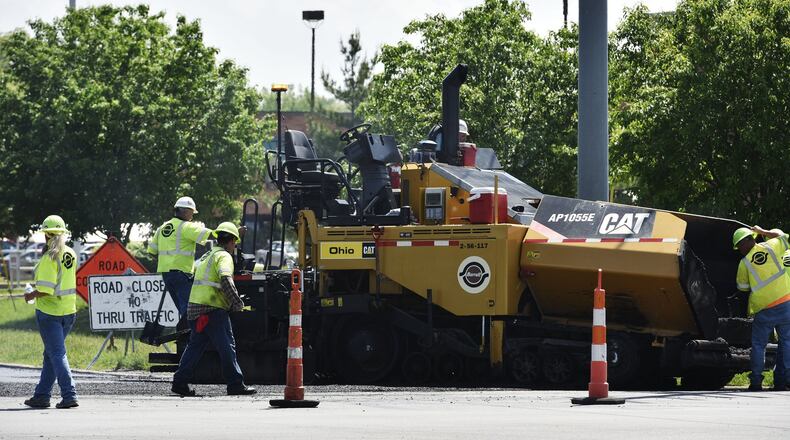“You get better prices the earlier you can get in the season because the contractors fill up and prices goes up,” Wlikens said. “We are working religiously to get our bids out early.”
Unlike several road construction projects last year that had to be re-estimated or rebid because the prices came in too high, the paving contract was well below the original estimate. Wilkens originally estimated it would cost $7.8 million to pave 46 miles of various county and township roads in 2019 and the commissioners awarded a $5.9 million contract.
Wilkens issues a bulk bid for all of the county and township roads for asphalt resurfacing, black mat and chip and seal. The townships all pay for their own paving. The estimates are $6.8 million for asphalt work, $696,955 for black mat work and $162,546 for chip and seal work that is only being done in Hanover Twp. this year.
Asphalt resurfacing is the most costly because is involves shaving off an inch and a half of the existing surface and filling it back in. Black mat is a blacktop sealer and chip and seal is a gravely surface. Wilkens said paving projects “aren’t terribly disruptive” because the new asphalt roads are passable within about 10 minutes. Black mat has to cure, so it takes a little longer.
RELATED: Ohio’s new gas tax: More revenue means Butler County communities are changing plans
Wilkens plans to pave almost 20 miles of county-owned roads this year, and West Chester Twp. has the next biggest project with about 7.7 miles, estimated at $1.3 million.
Tim Franck, the township’s community services director, said he budgeted about $1 million out of road funds and $1.2 million in TIF funds to pay for the roadwork. He said he won’t know which streets will be done until the bids come back.
“It’s all based on need, we inspect every street every year,” he said. “And then we use that to determine which streets are in the most need for the following year.”
A reader recently emailed the Journal-News that Bluebird Drive is terrible, “I have seen better streets in third world countries,” he wrote.
Franck said sometimes, as is the case with Bluebird Drive, other scheduled work can impact whether a road makes the cut. The Butler County Water & Sewer Department is scheduled to replace a water main in that area this year so that road will be fixed after that is complete, “based on need.”
“Community Services works with all of the utilities and the engineer’s office to understand what else is happening,” Barb Wilson, director of Public Information & Engagement, said. “It wouldn’t be very economical or responsible to put new paving down when you know they’re going to be digging it up.”
One of the smallest townships is investing $501,449 this year in paving about four miles of rutted roads. Milford Twp. was awarded $190,000 in Community Development Block Grant funds to pave nearly all of the streets in the now defunct village of Somerville.
Milford Twp. Road Superintendent Dan Burkholder told the Journal-News officials have been trying with difficulty to fix the “basically gravel” roads in Somerville since the village dissolved in 2016. The township also passed a five-year, 2.0-mill infrastructure levy in 2018 by a 63 to 37 percent margin.
“That’s helped us out quite a bit,” Burkholder said. “We’re finally able to get some roads tended to before we get too far behind.”
Fiscal Officer Mollie Hansel said the road levy brings in about $175,000 annually and the township is also receiving about $63,148 in additional gas tax money.
The Ohio Department of Transportation estimated the county as a whole will receive about $7.1 million more annually in fuel tax revenues after the 10.5-cent-per-gallon gas tax hike took effect last summer. The revenue increase is tangible in the fact the number townships participating in the county paving program has grown from five last year to eight in 2020.
“They’ve got some money to spend, you’ll see that universally,” Wilkens said. “Now I’m hoping the asphalt doesn’t go up that high, because it’s supply and demand.”
About the Author
